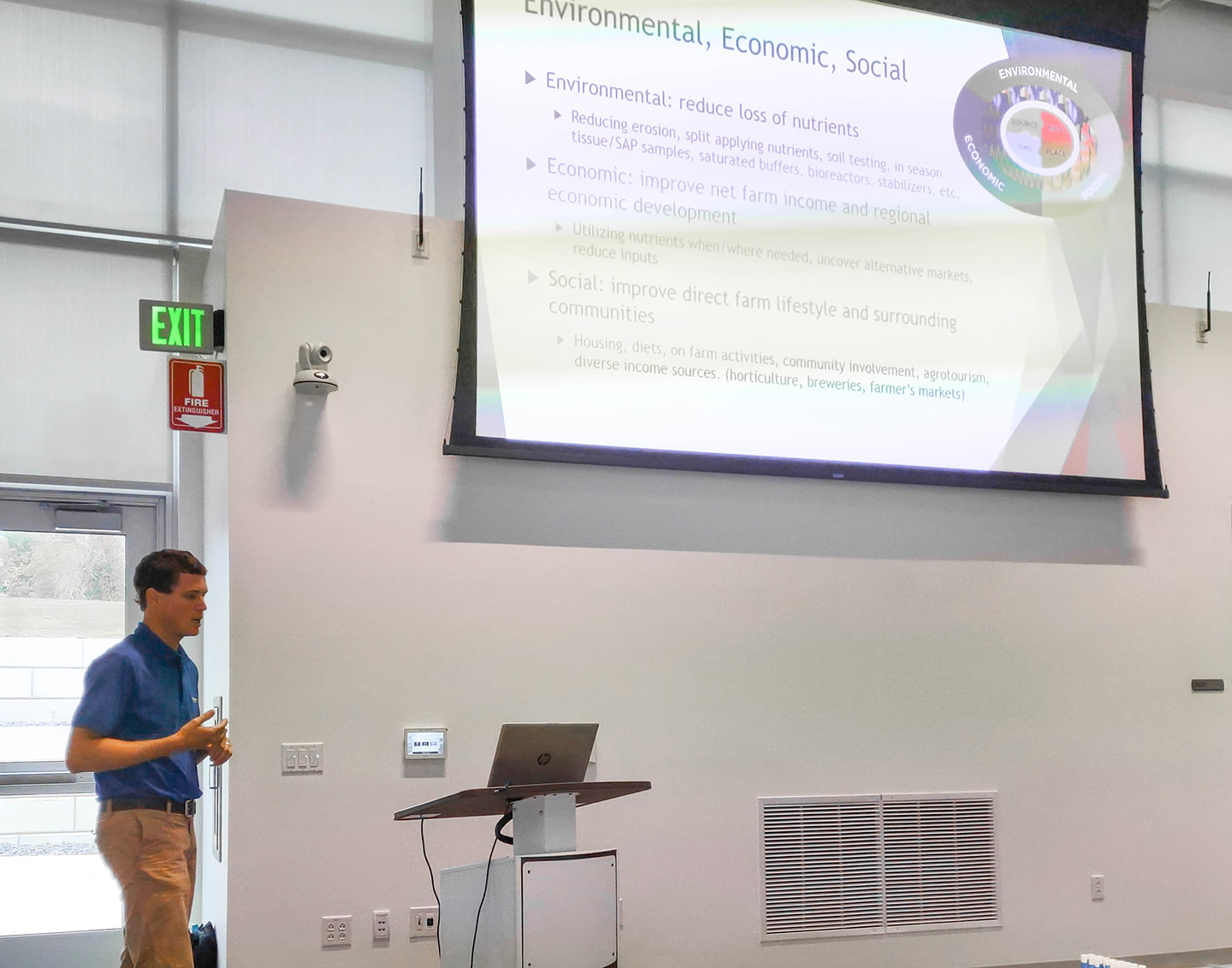4R Stewardship on display
September 1, 2022
“At that the end of the day, we want to utilize our nutrients, improve our profitability and improve our social communities.”
That was the message from Iowa Soybean Association (ISA) Conservation Agronomist Evan Brehm, during this week’s 4R Stewardship Field Day at Kirkwood Community College in Cedar Rapids.
Brehm was one of a handful of speakers during the annual event, presented by the ISA and 4R Nutrient Stewardship and sponsored by Agriculture’s Clean Water Alliance (ACWA), Mosaic, Corteva and Environmental Tillage Systems.
Multiple areas related to 4R Stewardship were discussed including regenerative nutrient sources, fertilizer banding, managing manure nutrients and The Iowa Nitrogen Initiative.
“At this year’s event we took a deep dive into how to improve nutrient management,” says Scott Nelson, senior field service program manager at ISA. “Attendees gained new insight into how to include the right rate and source of fertilizer and manure nutrients, at the right time and in the right location on their farms. We had many beginning farmers and agronomists attend along with seasoned veterans.”

Regenerative Nutrient Sources
“The 4Rs – all of these things are working continually in concert with the environment, economic and social outcomes,” says Brehm. “Each one plays an important role in nutrient management and stewardship.”
The conservation agronomist focused on the variety of nutrient sources and how farmers can regenerate those sources.
“Regenerative agriculture is a hot topic right now, but it makes a lot of sense,” Brehm says. “Many farmers have been farming like this for a long time. It’s a continual system between your farming operation and working with nature and wanting to reduce the negative effects of fertilizer or the practices that have been implemented.”
Brehm says the regenerative agriculture movement has been farmer-led with a large focus on overall soil health and water quality.
At the heart of this effort is cover crops that are utilized for protection and enhancement of the soil.
Those cover crops include grasses like cereal rye or barley which helps with the reduction of nitrates going into the water; brassicas like buckwheat, rapeseed or radishes which mine the soil for phosphorus; or legumes including hairy vetch, clover and peas.
These examples help with the suppression of weeds, increase water infiltration, and protects the soil.
“But in Iowa, cereal rye is the king of cover crops,” Brehm says. “Ninety percent of the cover crops used in Iowa is cereal rye.”
Brehm says farmers should look at cover crops the same as any cash crop – utilize them for profitability.
He cites an example of farmers using rye that was malted and used by area breweries.
“It has really opened the door for some of these alternative markets,” Brehm says.
In review
The event at Kirkwood was well received by participants and sponsors.
“I took advantage of the opportunity to attend and participate in the 4R Stewardship event,” says Harry Ahrenholtz, ACWA chairman. “ACWA has been a long-time supporter of the 4R concept for crop nutrient usage, so it was an easy decision to help sponsor this event for ag producers, agronomists and suppliers.”
“We had a nice combination of students, farmers and ag retail professionals who were committed to learn more on optimal nutrient management,” says Joe McClure, co-director of research for ISA Research Center for Farming Innovation (RCFI). “The Iowa Soybean Association is proud to partner with 4R Stewardship and the event sponsors to help deliver the latest information to Iowa farmers to enable sustainable profitability on every farm.”
Ahrenholtz echoed McClure's assessment.
“From its inception, 4R has offered a consistent message: Right source, Right rate, Right time and Right place,” he says. “It might be a straightforward concept, but in practice, it can be complex with many unknowns left to discover. This event highlighted the diligent work that is either already occurring or is planned in order to help unlock some of the mysteries. That will be an important driver to innovation and the implementation of more effective, more environmentally friendly, and more profitable crop production practices for the future.”
Back